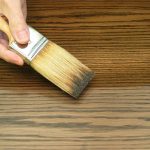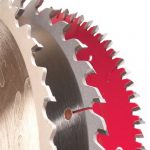We may receive a commission when you use our affiliate links. However, this does not impact our recommendations.
Recipe for Resawing
by Dave Munkittrick
For a woodworker, few things are more satisfying than resawing thin sheets of veneer off of a large block of wood or slicing a beautiful board in half to create two bookmatched pieces. I remember the enthusiasm I felt when I tried resawing for the first time. My excitement soon turned to disappointment however, as I watched my bandsaw chew up piece after piece of expensive walnut. Grrrrrr. It took me a long time to get over that initial experience. There’s no reason for you to share my pain, though. Here’s a recipe that will give you great results every time you resaw.
Choose the Right Blade
The single most important key to success is to use a sharp, high-quality blade. A dull blade is nothing but trouble. Here’s what to look for: First, use as wide a blade as your saw can handle. That said, we don’t recommend using a 3/4-in. blade on a 14-in. bandsaw unless the blade thickness is no more than .025. in. (For more information, see “Premium Resaw Bandsaw Blades.”) Also, see our resaw blade recommendations for 14-in. bandsaws in Sources.)
Second, choose a blade with three to four teeth per inch (tpi) and a 5- to 10-degree hook. Coarse blades have deeper gullets for better sawdust clearance. The hook tooth is an aggressive cutting design that lessens the feed pressure required. Reduced feed pressure keeps the blade from deflecting, which results in a straighter cut.

Adjust Tracking
With the saw unplugged, back off the thrust bearings and guides as far as possible. Mount the blade and temporarily set the tension according to the gauge on the saw. Manually spin the upper wheel and adjust the tracking knob until the blade is more or less centered on the wheel.

Set Blade Tension
The flutter test is the best way I’ve found to set the tension on a bandsaw blade. Keep the guides and bearings backed off and raise the blade guard to the maximum height. Stand clear of the blade and turn the machine on. Decrease the blade tension until the blade begins to flutter back and forth. Now, increase the tension until the blade flutter is eliminated. Add a one-half turn or so to the tension knob and the blade tension should be just right.
Adjust the Guides
I use the thickness of a dollar bill or a piece of paper as a spacer for setting the guide blocks and thrust bearings. First, set the blade guide arm so it’s about 1/4 in. above the height of the stock you’re resawing. Then bring the guide block assembly forward until the fronts of the blocks are even with the bottoms of the blade gullets. Wrap a dollar bill around the blade and set the blocks up tight against the sides of the blade. Use the bill again to set the thrust bearing behind the blade. Repeat the process for the lower guide blocks and thrust bearing.
Non-metallic blocks, such as Cool Blocks, can be set in direct contact with the blade and don’t need the dollar bill spacer.

Find the Drift Angle
Try cutting a straight line on your bandsaw. You’ll notice that your stock has to be fed at an angle in order to make a straight cut. This is called the “drift angle.”
Setting the fence at the right drift angle is critical to successful resawing. Start by cutting a straight line on a piece of scrap. Stop the cut about half way and trace the angle of the board onto the bandsaw table. This represents the angle your fence needs to be set at in order to make a straight cut. Set your fence parallel to the line on the table and you’re ready to resaw. Try a test cut first. Most of the time, everything works great right off the bat. Occasionally, I find a few minor adjustments to the fence angle or a little more tension is required for best performance.
Finally, be sure your stock is jointed square and that your blade is square to your table and don’t forget to use push sticks at the end of the cut.

Sources
Note: Product availability and prices are subject to change.
Highland Hardware, highlandhardware.com, 800-241-6748, Highland Hardware’s Wood Slicer, $30.
Suffolk Machinery, suffolkmachinery.com, 800-234-7297, Timber Wolf AS-S, 3/4 in., $25.
This story originally appeared in American Woodworker November 2003, issue #104.
Here are some supplies and tools we find essential in our everyday work around the shop. We may receive a commission from sales referred by our links; however, we have carefully selected these products for their usefulness and quality.










